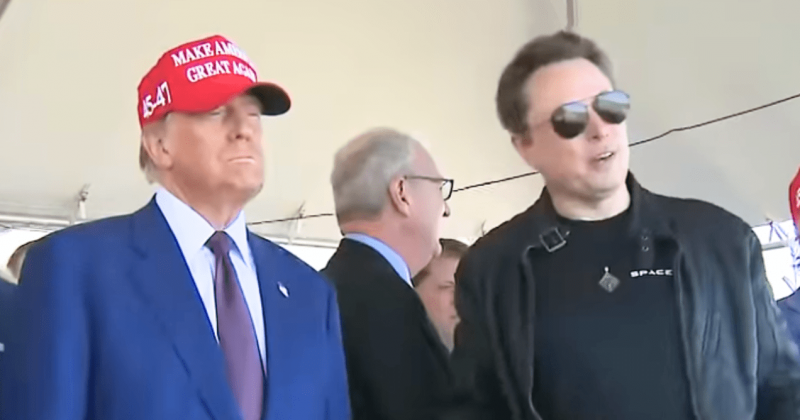The White House displayed a reunited front this week as President Donald Trump publicly acknowledged Elon Musk during multiple appearances with visiting Saudi leadership, signaling the end of a bitter dispute that threatened Republican electoral prospects.
During Wednesday’s address focused on business opportunities with Saudi Arabia’s Crown Prince Mohammed bin Salman, Trump name-checked the Tesla founder three separate times.
The public display followed a Tuesday evening state dinner where observers noted friendly physical interaction between the two men.
While discussing proposed vehicle manufacturing tax incentives, Trump quipped to Musk about their relationship.
The president questioned whether the entrepreneur had adequately expressed gratitude for the beneficial policy environment.
Trump also brought up strategic decisions from last year’s presidential campaign.
He referenced conversations with Musk about timing attacks on Democratic positions regarding immigration enforcement and athletic competition policies.
The president described withholding certain messaging until the final weeks before voting.
He directly asked Musk if he recalled those tactical discussions, with the billionaire seated prominently among attendees.
Multiple individuals with knowledge of White House operations credit Vice President JD Vance and chief of staff Susie Wiles with engineering the rapprochement.
Five separate sources confirmed their instrumental roles in bringing the two powerful figures back together, according to the New York Post.
One person familiar with the reconciliation process explained that both Vance and Wiles established themselves as reliable intermediaries. They created channels for Musk to engage with administration priorities while maintaining confidentiality.
The discretion surrounding these conversations proved essential to rebuilding damaged trust.
Musk has reportedly conveyed his desire to assist administration objectives moving forward.
Sources indicate he wants others to understand his commitment to constructive engagement rather than confrontation.
Someone inside the White House described significant improvement in relations over the past five months. This timeline places the thaw well after Musk’s stunning demands for presidential removal from office and his declaration about creating a competing political organization.
That third-party threat carried serious implications for Republican chances in approaching congressional elections. The potential vote-splitting scenario alarmed GOP strategists who understood Musk’s financial resources and public influence.
Wiles recognized Musk’s substantial contributions to reducing federal bureaucracy during his tenure leading government efficiency initiatives.
She led a department focused on downsizing from January through May without compensation.
According to a second source, Wiles determined that completely severing ties with someone who had delivered meaningful results made little strategic sense.
Another individual noted Vance’s particular effectiveness in these efforts.
Trust between Musk and these two advisers apparently exceeds his confidence in other administration figures.
Vance specifically invested considerable energy into defusing tensions over several months.
The careful diplomatic work produced tangible results when Trump and Musk spoke face-to-face in Arizona. They attended memorial services for Charlie Kirk, the Turning Point USA leader who died in September.
Separately, personnel changes addressed another major irritant in the relationship.
A temporary calm emerged after Musk removed his inflammatory social media content. However, he then announced plans for a new political party in early July, claiming it would restore American liberties.
This America Party announcement created an existential threat to Republican electoral mathematics. Any significant third-party candidate drawing conservative voters could hand victories to Democratic opponents.

